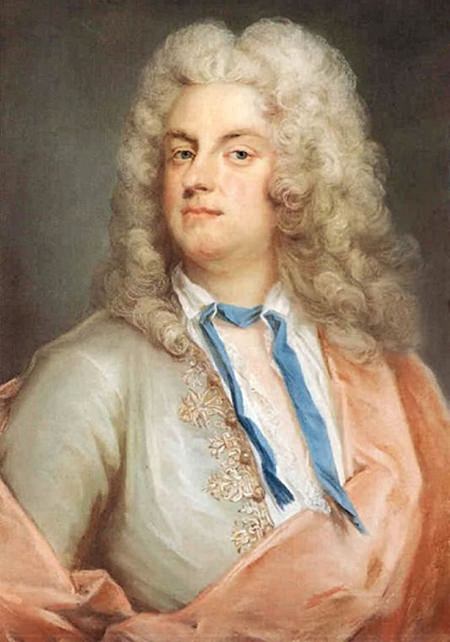
I don’t know whether you’ve ever tried, but finding a meaningful definition of classical music is like trying to wrestle with eels. Or so I am told, for I have never had the opportunity – or the inclination – to wrestle with one. For a start, the expression “classical music” has two distinct meanings. In casual conversation we use it to describe a genre essentially different to jazz, dance music, pop, rock and folk music. Among musicians and historians the expression “classical music” has a more specific meaning and refers to the styles of musical composition that prevailed in Europe roughly between 1730 and 1800. During those years, architecture and the arts began to move toward lighter styles which sought to emulate the perceived ideals of classical antiquity, especially those of Classical Greece. They were in stark contrast to the seriousness and weighty magnificence of the Baroque, which was being seen as increasingly old-fashioned.
Please Support Pattaya Mail
Today, the two most revered composers of the classical period are Haydn and Mozart who are now considered middle and late classical composers respectively. At the time, other top-league composers were Salieri, Gluck, Clementi, Boccherini, Carl Philipp Emanuel Bach and Dittersdorf. So according to the musicians’ definition, Vivaldi (for example) didn’t write “classical” music and neither did Brahms, Wagner nor Tchaikovsky.
The period of classical music coincided roughly with Age of Enlightenment, sometimes known more prosaically as the Age of Reason. It was partly inspired by the thinking of Jean-Jacques Rousseau, Francis Bacon and René Descartes. It was one of the most extraordinary periods in Western cultural history and was partly responsible for the French and American Revolutions. At the risk of being over-simplistic, it boiled down to the notion that people should think and reason for themselves. It challenged individuals to question accepted norms, even the wisdom of the church and the ruling elite.
Enlightenment thinking pervaded every aspect of society and led to the concepts of freedom, democracy and human rights. It also brought about new approaches in scientific reasoning. Interestingly, the seeds of the Enlightenment had been partly sown in the field of science during the previous century with the discoveries of Galileo and Kepler. Further momentum was provided in the 1680s when Isaac Newton published his Principia Mathematica and John Locke published his Essay Concerning Human Understanding. Locke’s work had a significant influence on Jefferson’s 1776 Declaration of Independence.
The changes in the social order had a profound influence on music too. The newer musical styles that we now refer to as “classical” tended toward simplicity and lightness of texture. Instead of interweaving instrumental parts, the music relied more on attractive melodies supported by an unobtrusive harmonic accompaniment. It also borrowed elements from the rather formal “gallant style” which emphasized elegance, grace and symmetry.
Carl Ditters von Dittersdorf (1739-1799): Harp Concerto in A major. Rosa Díaz Cotán (hp), Neubrandenburger Philharmonie cond. Daniel Stratievsky (Duration: 21:04; Video: 1080p HD)
Dittersdorf was a prolific composer who wrote 120 symphonies and possibly a hundred more. Most of the symphonies were never published during his lifetime and still remain relatively unknown. This delightful work is a transcription of one of his five keyboard concertos. Composed in 1779, it’s cast in the standard three-movement concerto format; a lyrical slow movement sandwiched between two more robust fast movements.
In his day, Dittersdorf was considered a top-ranking composer and hearing this confident work it is not difficult to see why. There are many beautiful moments, especially in the charming slow movement (at 07:24) in which the oboe and harp exchange fragments of melody. The last movement is typically light and playfully folk-like and the work receives a splendid performance from both soloist and orchestra.
Giovanni Paisiello (1740-1816): Piano Concerto No. 5 in D major. Francesco Nicolosi (pno) Orchestra Antonio Vivaldi cond. Lorenzo Passerini (Duration: 14:29; Video: 1080p HD)
Giovanni Paisiello (jo-VAHN-nee pahee-zee-AYL-lo) was even more prolific than Dittersdorf and wrote eight piano concertos, a vast number of choral works and a staggering ninety-four operas. This work dates from 1788 but after listening to the elegance of Dittersdorf, the exuberant and somewhat coarser style of Paisiello might come as an uncomfortable surprise. Although his piano concerti bear superficial similarities to those of Mozart, this work is much less sophisticated and at times even a bit naive. Even so, in his day Paisiello’s music was popular all over Europe.
The slow movement (at 06:16) is a finely honed melody, delicately supported by the orchestra. The last movement (09:32) starts with a cheeky-sounding melody and the busy piano part scurries around imitated by other instruments. It’s light-hearted and frothy and jolly good fun. However, it also shows why Mozart is now considered one of the “great” composers whereas Paisiello – despite his ninety-four operas – is not.
 |
 |
 |





